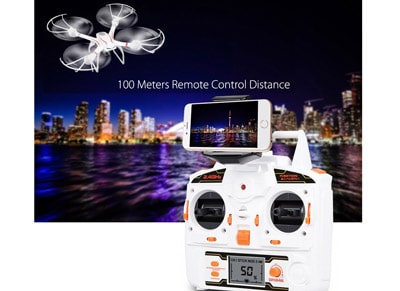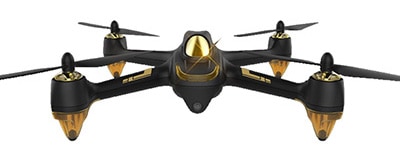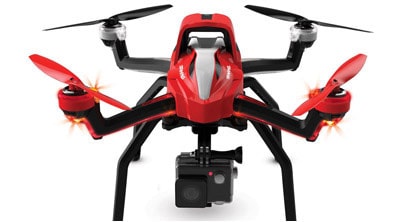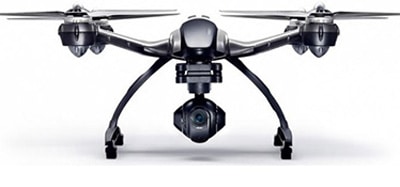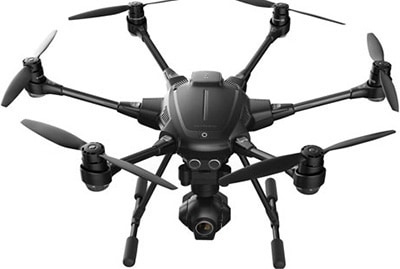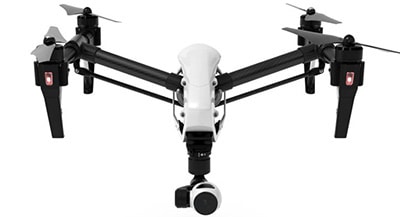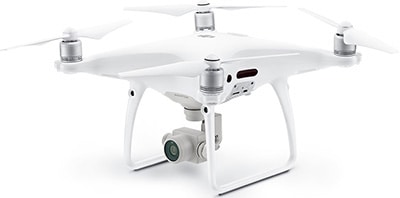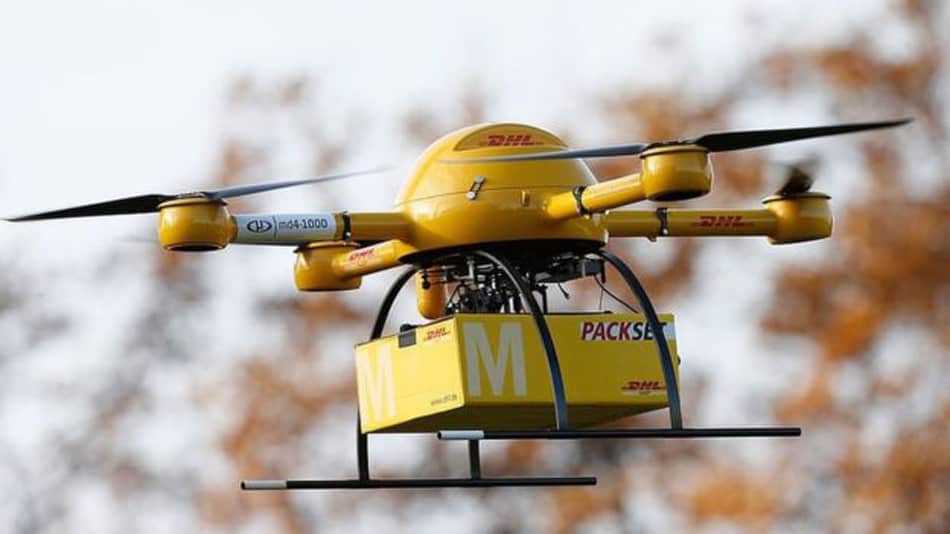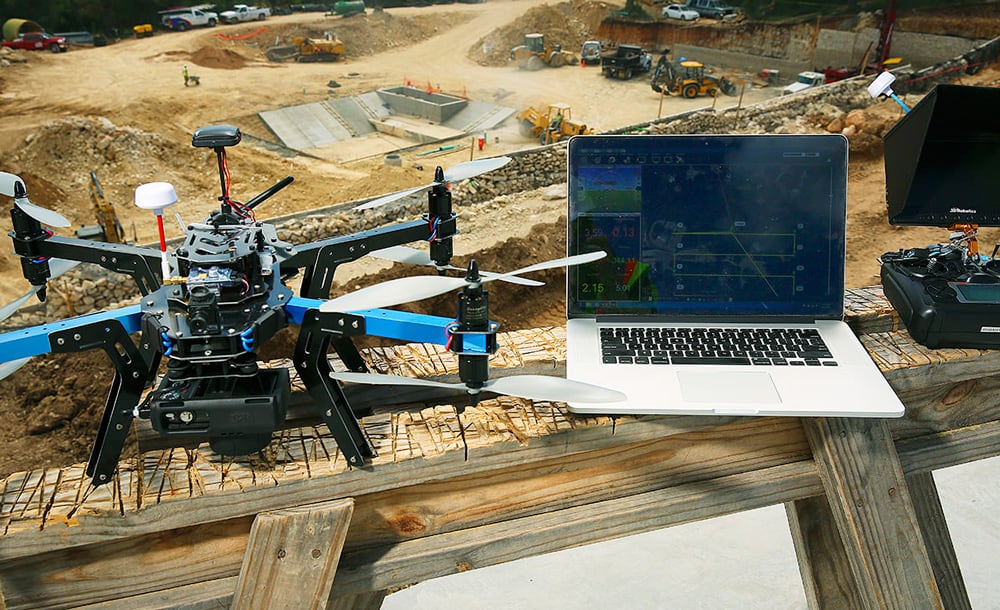Personal radio-controlled drones are becoming exceedingly common in today’s market. For hobbyists and newcomers alike, drones offer a unique new way to approach RC flight and allow users to capture sights that weren’t possible on their own. So, it’s no wonder every other drone comes with a payload capacity or ability to attach a GoPro camera to its frame (10 drones with GoPro camera). Video and photographs from previously impossible angles are created, meaning there’s more incentive for enthusiasts beyond piloting a small machine.
Long range Uavs – Table of Contents :
13. Hubsan H501S
12. DJI Phantom 2
11. Traxxas Aton
10. MJX Bugs 3
9. DJI Phantom 3 Standard
8. Xiro Xplorer V
7. Yuneec Typhoon Q500
6. Yuneec Typhoon H
5. DJI Inspire 1
4. DJI Phantom 4
3. DJI Phantom 4 Pro
2. DJI Inspire 2
1. DJI Mavic Pro

Beyond how long they can remain in the sky (10 drones with longest flight time), however, drones do have some limitations. Finding out which drone in which price tier has the least amount of limitations is the key to enjoying the hobby to its fullest. In this case, it’s about range. Since drones are remote controlled they need a signal to respond to from the pilot’s point. Common question is : How far can a drone fly? Good drones can still hold steady hundreds, if not thousands of feet, away. Lesser models will likely falter after about a few hundred feet or less.
TABLE OF BEST LONG RANGE DRONES :

Flying drones in commercial purpose require a FAA Drone Pilot License. We have covered that topic in our : FAA Part 107 Test Guide article.
So in this article, we’re going to target drones which can get to impressive distances within their price ranges. We’ll mention other important specs too, but the main focus will ultimately cover how lengthy their sky trip scan be. Don’t forget to read our list of top drones for real estate agents 
2 Toy Grade Drones
15. Holy Stone HS170 Predator Mini


Of the long distance drones for sale, Holy Stone’s mobile little drone starts off our list as a great starter machine. It’s called the mini, because surprise, it’s a lot smaller than a standard drones usual specifications. Still, that doesn’t mean it’s awful. It’s quite the contrary when we come to think of it…
That being said, the Predator Mini boasts wind resistant flight reaching distances of roughly 30-50 meters (almost 150 feet). That’s a darn good distance for such a small unit, meaning it works for both entertainment and to just practice flying RC drones. It’s currently priced at $40 USD, a cheap investment for those curious about the hobby.
With all that in mind, it’s also a must to mention that Holy Stone Predator Mini is a great beginner drone that won’t break easily. Even in case you somehow manage to break it, don’t cry too much because it wasn’t very expensive and next time but two instead of only one. 
14. MJX X10C FPV


A stylized, mainly white drone quadcopter, the X10C comes next in the tier by rumbling through the skies with a flight distance maximum of about 100 meters, or 300 feet. With a fair price and decent range, it becomes a no-brainer for everyone trying to get into drone hobby.
It’s also been marked down from its original price tag (yes, that means it’s even cheaper now), meaning it’s a good choice as a long range drone for sale. According to the vendor, it isn’t too difficult to fly either and has a camera for capturing 720p resolution video. As a nice little bonus, it’s also compatible with MJX’s virtual headset, granted how useful that is we couldn’t say (it’s also not included).
If you have plans to scour the air for a fair hundred feet, this is a great start. This virtual reality headset probably is comparable with ones used in drone racing leagues, but hey – you get what you pay for. Good pick to get you into world of drones and FPV flying. Good control range is always a bonus when we’re talking about drones. There are many reasons why this is one of most popular drones for kids.
13. Hubsan H501S

This is where real game begins. For such a low price you get a drone that has : Altitude hold, Follow me mode, Headless mode, GPS (back to home), 6-axis flight control. As some of you probably realize, this sort of features can be found on more expensive drone that go well above $200…
Come to think of it, if someone told me a year ago that I’ll be able to get all these functions for $200 I’d told him he must be joking. Oh, I almost forgot. If that’s not enough, it comes with 1080p FPV camera as well! It’s featured on our list of 10 Best Camera Drones. There’s no doubt that will suit all your drone racing cravings that you have going on.
Since this article is all about range, I should tell you that Hubsan H501S has a flight range of 300 meters. To be honest, there’s no chance you can see this drone on that distance, but I’m pretty sure there will be people who’ll put it on its limits. If you’re one of these, please record it and upload to Youtube! 
Show me the best price for : Ashburn, United States
12. DJI Phantom 2

As we jump into the next price tier of RC drones, we’re greeted by the DJI Phantom 2, a quick and mobile variant of the Phantom series. While reports remark that it can be fragile, meaning it’s more aimed at veteran pilots, it boasts some great airtime stability.
Additionally, the Phantom 2 reaches distances between 300-500 meters, but there are some owners who claim they have reached 1km+ without any antenna customization. So I believe it can easily go over 500 meters on open field. Since it supports GoPro and other action camera, it can easily be used for exploring unexplored areas or just casual photographing of cool scenes. Flight time is somewhere around 15-17 minutes which is more than enough in most of cases, for most of flyers. There is always an option to buy extra batteries if you need longer flights.
With all of the above taken into consideration, it is quite clear (even to the biggest beginners reading this) that DJI Phantom 2 still hasn’t lost its competitive spirit. So, it’s only appropriate to recommend it as a great value for money option… One of the best ones out there, for that matter!
Show me the best price for : Ashburn, United States
11. Traxxas Aton Plus

Traxxas is well known for their RC products, especially cars. Last year they decided to enter drones market, and they did it. Successfully. Traxxas Aton Plus is more like professional grade drone for a price of toy grade drones.
The one we’re talking about comes with 2-axis camera gimbal included and 5000mAh 3-Cell Traxxas iD LiPo Battery. There is one cool function named “Air Brake”, it allows you to stop and hover at the push of a button. That function works great, much better than I expected to be honest.Stays within its own geofence of 400 feet high and a 500 foot (150 meters) diameter. When it reaches those limits, it automatically returns to home (determined by GPS positioning) and shuts itself off.
I’ll quote one review from Amazon : “One of the best things for new pilots is the multiple safety features Traxxas has built-in to the flight control system greatly reducing the risk of “flyaways” you so often read about. And watching this thing quickly return to home all by itself – from hundreds of feet away – is truly an amazing thing to witness. The LED lights make it stand out like a beacon at night and even when cruising around at high altitude in the dark, it’s super easy to distinguish front from back.”
Show me the best price for : Ashburn, United States
10. MJX Bugs 3

This little fella is among the cheaper drones on this list. It is mostly so due to the fact it does not come with a camera. Despite that, it still features a gimbal that supports GoPro HERO models as well as off brand action camera. The actual process of mounting one is quite simple and you should not have any difficulties with doing so.
Luckily, the rest of the drone is more than enough to compensate for the obvious lack of camera. For instance, it features brushless motors (MT1806 1800KV) which are known for their durability. It’s a surprising fact considering there are not that many drones in this price range that can boast with brushless motors. In addition to that, MJX Bugs 3 also comes with a powerful 1800mAh battery. What’s awesome about it is that it effectively lasts up to 15 minutes in the air, making it quite the lengthy flier. The operating range is pretty solid as well. Its controller can be as far as 300 meters without any lag or losing connection.
Combine all of that with a generally awesome design and solid build quality, and you’ll realize that this is probably one of the best long range drones out there when it comes to price / performance ratio.
Show me the best price for : Ashburn, United States
9. DJI Phantom 3 Standard

DJI and its respective fleet often find their units on our list for having a pretty lengthy variety of models to choose from. That, and the hardware in question has a lot to offer.
Previously, the Phantom 3 was also on our list of drones with the longest battery life, because it sported a whopping 20 minutes. Let’s add to that, as the Phantom 3 has been recorded to hit distances of about 500 meters, or 1500 feet. That manes enthusiasts can get some really amazing sky shots while the Phantom 3 does its thing. The basic unit, which lacks an extra batter and such, sits close to $500 USD, making it a decent long range quadcopter for sale in this tier.
To summarize – The “entry” model in DJI Phantom 3 lineup is still a viable choice for everyone wanting a decently priced long range drone that can satisfy all of their aerial photography needs. With a sleek design, outstanding build quality and plenty of spare parts available, DJI Phantom 3 Standard seems like a proper deal any day of the week.
Show me the best price for : Ashburn, United States
8. Xiro Xplorer V

If the name didn’t already imply it, the designers really want you to understand the “X” is a major feature here. Even the drone has an x like shape. Is that some sort of an X conspiracy? I don’t know…
More to the point, as a long range drone with camera, and it’s heavy $560 USD price tag, one expects some performance. Well, it does deliver at least in principle, with a bulky sky life of 20 minutes. So, if you’re asking yourself how far can a drone fly. Emphasizing flight range, our x-loving drone gets around on 1800 feet ranges, or 600 meters. From there, you can capture all its sported 1080p video you want.
Additionally, Xiro Xplorer V is a FPV drone by all means. Video transmission works very well, better than I expected to be honest. There’s updated version of this drone available now (Xiro Xplorer 2) which looks very futuristic. That also means this version is now on sale, so get your piece right now!
Show me the best price for : Ashburn, United States
7. Yuneec Q500+ Typhoon

The Typhoon is on this list again for all around impressiveness. In our other articles, we were already liking its considerable half-hour sky life. The facts don’t change though, and the Typhoon has an RC range of about 8000 feet, according to reports.
At $700 USD that might be one of the better deals you can get. In this tier, it also makes it one of the best long range camera drones you can find. Granted, the area you’re in might affect this lengthy range, but overall it can get places for the photo/drone enthusiast.
In the end, I believe you just can’t go wrong with Q500 if you’re looking for long distance drone that’s capable to record high quality video and capture amazing photos. With excellent design, solid specifications and an outright fair price, only sky is the limit for Yuneec Q500+ Typhoon.
Show me the best price for : Ashburn, United States
6. Yuneec Typhoon H

As we approach the priciest drones we scavenged up, it’s good to note we expect only professionals or hobbyist veterans around these parts. Only because drones like the Typhoon H are pretty expensive and we highly suggest being very careful when handling it. This also means what we list will have some expected veterancy, so use with care.
Yuneec claims their Typhoon H can fly a full mile (1.8km) before losing signal and coming back to you automatically using GPS. Meaning, much like flying a small craft, you may actually need to be aware of other flying things in your area. Now that we’re done lecturing, the Typhoon H also has a digital flight path you can create to mingle as one of the drones with the best range.
We should also mention it’s obstacle avoidance system that works very well. Then there is auto follow me mode packed up with some of the best cameras available on the market. You can’t go wrong with his drone, especially considering value for money you will be getting with Yuneec Typhoon H!
Show me the best price for : Ashburn, United States
5. DJI Inspire 1

Surprise! DJI has multiple listings on our choices for long control range drones again. But, credit given where it’s due, their models are tried, tested, and well received. With all that being said, it is not really that surprising to see the original Inspire on this list. The pricing is still a big issue for casual users though, so we’ll have to see how will it rank up with cheaper options…
At about $2550, the Inspire 1 will then crown our list for being the most relatively expensive model equivalent to the distances it can reach. We should add, aside from its manufacturing, the extra pricing comes from included camera and hardware.
So how far can you capture its boasted 4K video? No more than 1500 feet, actually, so don’t think you’ll be recording clouds. Radio transmission range is better though, hitting distances close to 2km (or 1.2 miles). While you might not get full range for video, you can go a long way, and it’s worth noting the drone has a pretty good payload haul.
Show me the best price for : Ashburn, United States
4. DJI Phantom 4

Newest model in one of the most recognizable series of drones ever, DJI Phantom 4. Compared to DJI Phantom 3, it comes with everything slightly upgraded. Now we have better (4k) camera, obstacle avoidance system (Phantom 3 didn’t have this), improved battery, motors, controller etc. Pretty much everything is slightly improved.
Since this article is all about control range, I’m more than happy to inform you that DJI Phantom 4 has an operating range of 6 kilometers on open field. With new battery that will provide you with 25 minutes of flight time, this sounds pretty awesome! Combined with FPV Goggles, P4 will provide you with great flying experience!
I should also mention that price of Phantom 4 has significantly dropped since DJI revealed new model : Phantom 4 PRO. If you’re interested in buying this drone, now you can get it at pretty good price! It’s definitely worth every penny, that’s for sure!
Show me the best price for : Ashburn, United States
3. Phantom 4 Pro

DJI has continued with their recent success, releasing 3 high end models that have definitely created quite the stir on the market. Phantom 4 Pro is one of the 3 (second two can be seen down below) and looks to be a great upgrade nevertheless.
With an abundance of sensors, including the all new obstacle avoidance (this is the first DJI’s drone with such technology implemented) system. It allows the drone to fly seamlessly wherever you want it to, without any issues with collisions or crashing since its advanced sensor mechanisms will detect and avoid anything dangerous that might come in its way. The design has stayed roughly the same, with exceptional build quality just like we are already used to seeing from DJI’s drones.
Specifications have been slightly booster as well, giving an overall much better performance. 7 kilometers of operating range (same technology was implemented in all 3 of their new models) and roughly 27 minutes of flight time make this a proper premium model. There isn’t that much more to be said about DJI Phantom 4 Pro that you already don’t know about. Perhaps the only thing worth mentioning is its maximum speed of approximately 44mph (roughly 72 km/h) which is incredibly fast for a casual/aerial photography drone. With that being said, let’s move straight to the second one of DJI’s awesome new drones that looks to set its throne as the new best drone for aerial photography!
Show me the best price for : Ashburn, United States
2. DJI Inspire 2

Click here to see more images on Amazon
Inspire 2 is a well anticipated drone that definitely looks to exceed everyone’s expectations. With even better specifications and more hi-tech features than its predecessor, Inspire 2 looks to be set for the stars. You see, everything design-wise has remained the same. There’s still the breathtaking rotor-raising feature that clears the view for the 4K camera that’s better than ever. Of course, it is mounted on the Zenmuse X5S gimbal stabilization which is, I’ll dare to say, currently the best one on the market.
In addition to that, it is important to mention that it also features obstacle avoidance in addition to dual GPS+GLONASS navigation systems. Moreover, the specifications are absolutely breathtaking – half an hour of battery life and 7 kilometers of operating range make this drone a great choice for people who don’t mind spending a ton of money for it. With that in mind, Inspire 2 is still going to be mainly purchased by professional photographers since it is, at least at the moment, the best mainstream aerial photography platform on the market. The stabilization this beast features is just unearthly and is able to deliver silk smooth footage no matter the fight conditions.
All things considered, Inspire 2 seems like it’s going to make a heck of a name for itself out there! Still, keep in mind that this is not a beginner’s drone which its price tag strongly suggests as well…
Show me the best price for : Ashburn, United States
1. DJI Mavic Pro

Click here to see more images on Amazon
There is a huge swarm of selfie drones at the moment. I do not know if you guys have realized this before, but it’s damn true. The selfie drone market is rapidly growing in popularity and it is no wonder that DJI, the world’s most popular drone manufacturer, decided to step in and take their share of the cake… and, oh boy, did they do it in style!
With Mavic Pro they are aggressively attacking the high end selfie drone market. You see, this miniature foldable drone has much higher specifications than all other competitors in the selfie category. With 7 kilometers of operating range and roughly 25 minutes of flight time, there’s no point in any comparisons to its main competitors such as Zerotech’s Dobby or XIRO’s Xplorer Mini (both of them have cca 100m flight range and 10+ mins of flight time).
Moreover, it comes with an excellent 4K camera that has its own stabilization system… and quite frankly, it does wonders! The design is as sleek as It can be, but then again, that’s no surprise since it’s a DJI product. Last but not least, I’d like to mention that it is packed with smart features that we’ve had the chance to see with Phantom 4 Pro and Inspire 2 as well, ActiveTrack and TapFly. In addition to them, you will find plenty more of them, most of which will definitely prove to be of massive help. Whether its for stability, whether its for taking pictures or even sheer control over the drone – DJI’s wide array of features will have you covered.
In the end, I believe there is nothing left to be said about Mavic Pro. It definitely is a mile ahead of all competition, but those premium specifications sure do have a premium price tag to its name. If something can disrupt Mavic Pro’s goals, then it’s definitely the huge price gap in the niche… But that’s something we’ll have to wait and see…
Show me the best price for : Ashburn, United States
Typical usage scenarios for long range drones
Drones with extremely long ranges are viable for a wide array of usages. These range from filmmaking, recreational exploration and a plethora of commercial uses as well. The latter provides the most value for people willing to invest in high end drones capable of reaching more than 5 kilometers away from their controller.
They are fast, agile, and can fly high above the ground making it almost impossible for people to spot them. Additionally, there are also specialized drones that are primarily targeted at certain industries (f.e. agricultural drones, delivery drones, surveillance drones), making them even better for that particular branch of industry. So, with all that in mind, let’s take a peek at the most typical usages for such drones! Let’s see what are they most useful for!

Delivery
With both UPS and Amazon racing to fully develop their drone delivery systems, the future in which drones will act as primary means of delivering goods seems certain! Come to think of it, this is not surprising at all. Drones are already fully autonomous and will a little software trickery they can be made into fully fledged delivery fleet. Even though drone delivery is not yet a real thing anywhere in the world, after a couple of successful tests (f.e. Amazon test in the UK and UPS test in Florida) it seems as though it is only a matter of time before they start delivering our toys to us… quicker than ever.
Surveillance
Surveillance is a big part of our society and it is safe to say that modern day drones pushed it one step further. Long range drones are often used for surveillance and it’s becoming more and more clear that they excel at it. Whether they are guarding a particular area of interest from intruders, private properties, or The White House; monitoring protests, groups and certain activities, the key of drone surveillance is in their stealthy approach. Since today’s flagship long range drones are fast and can fly high above people, they are pretty difficult to notice, allowing people to think they are not being monitored. Equipped with night vision and infrared cameras, they are the ideal surveillance tools that can effectively monitor huge areas, making sure there is no breach of security while they’re in charge.
Agriculture
I am sure most of you know about the highly specialized drones that are used for agricultural purposes from fertilizing to regularly inspecting crops. With a wide array of visual feedback such as infrared data, farmers can learn more about their crops and investigate potential weak sports and distressed plants. Undoubtedly, this is extremely useful for everyone making a living with agriculture and is a magnificent modern-day tool that more and more farmers are investing in. Other than that, farmers can also use schedule automatic crop inspections and fertilizing/watering which will result in maximized yields and better, healthier crops.

Mapping
With the introduction of long range drones, mapping has experiences a proper rebirth. Nowadays, there are whole fleets of drones being used for mapping particular areas. Modern day drones are able to effectively map entire forests, rivers, hills and mountain chains, making them extremely useful for that matter. Mapping is most often used for understanding certain hard-to-reach areas which tend to rapidly change, such as fast-moving rivers, forests and so on. In addition to that, mapping is also used in highly urban areas where other means of mapping (f.e. via helicopters) is not that viable due to the huge size of the vehicle.
FAA – How far am I allowed to fly a drone?
FAA has a whole set of new drone regulations that are already being enforced. For casual users, the law states that the maximum height you can fly at is 400 feet. Fly above that and you might get arrested and pay up to $250,000 fine and perhaps even spend up to 3 years in prison (this sounds rather harsh to be honest). Another reason that could potentially get you in jail (or a hefty fine) is flying a drone beyond your visible line of sight (BVLOS). With that being said, you must keep the drones in your sight at all times. Even if you are heavily relying on your drone’s FPV capabilities, it still must be in your LOS otherwise you’d be breaking the federal laws.
Commercial users are now bounded by a different set of regulations. First off, they will have to pass the 107-knowledge test which incorporates 60 questions and requires at least 42 correct answers. After passing the test and getting their diploma, commercial users are finally allowed to fly their drones for, you’ve guessed it – commercial purposes. But, that still does not mean they can legally fly above 400 feet or beyond their visible line of sight. For that, commercial users will need to get special permits directly from the FAA.
Luckily, the FAA has already granted a couple hundred exemptions to commercial uses who need to fly their drones BVLOS. Most of these commercial users work for agricultural companies allowing them to inspect their fields without breaking the law. There are also surveillance companies that only fly BVLOS during night to improve their security.
Other things to consider when buying a long-range drone?
In addition to long range, there are several other key aspects of a drone that you need to look into before making your purchase:
Camera
If you are buying a surveillance or mapping drone, you need to make sure it is equipped with a state of the art camera. If not, you will be left out with a mediocre (at best) image quality which will, in the end, not be that impressing. So, if you are already willing to spend more than a thousand bucks for a drone, make sure it comes with a proper camera (at least a 4K one with 3-axis gimbal stabilization system). Depending on what you’re buying the drone for, you might even upgrade it to a night vision/infrared camera with optical zoom (and mind you, this heavily depends on why exactly are you purchasing the drone for) which will further improve the data you’ll receive.
Battery
Battery is a very important aspect which could make or break certain drone deals. That’s why you should always aim for drones with easily replaceable batteries with quick charge technology (so you can charge one while the drone is flying on the second one) that can endure at least 20 minutes of active flight. With that being said, keep in mind that 20-25 minutes is considered a bare minimum and you should never compromise with anything below that.
Blade Chroma - Hidden after 2017 update
Blade Chroma

Blade Chroma
This great looking drone deserved it’s place on this list. It’s not only one of the drones with best flight range in this price range but it’s also one of the best drones for aerial photography and videography in this price range because of it’s stability, reliability and SAFE technology Blade putted into it. Using solely a remote control for operation, the Chroma can be flown up to 400 meters (1,312 feet) away from you. Compared to the average controllable range of 100 meters, you can control the Chroma from 300 meters (984 feet) further away. That’s not where the party ends. There are several versions of Chroma, some of them supports GoPro Hero 3 and 4 action cameras, while one version(on the picture) comes with it’s own camera. Both are great quality but buying one that works with GoPro can save you some money in case you already have GoPro camera.

Ehang Ghost - Hidden after 2017 update
Ehang GHOST 2.0

Ehang GHOSTDRONE 2.0
GHOSTDRONE is one of the many drone variants which fancies control and integration with iPhones and respective apps. When it comes to that there’s always mixed reactions mingled with uncertain functionality, but this model does an okay job working with wi-fi networks. The bigger story here is its distance life, coming to half-a-mile, according to the maker, meaning it’s one of the better drones with long range. It also boasts it’s the easiest drone model to fly. With its various modes, range, and weather stability functions, this might be true. Sitting on the edge of an $800 USD pricetag, it’s up to the user to figure out if they want it that much. This is definitely one of the best long range drones.

The post 15 drones with the longest control range [sorted by price] appeared first on DronesGlobe.com.
Back to topic! Scout could, in fact, shape up the not only the future of US air force but the future of counterterrorism as well. But that’s not even the best part… The entire manufacturing process behind Scout leads to an amazing cost of just $613. This number looks even more amazing when compared to the cost of current drones that are going to be replaced with Scout clones. Approximately $30,000 in comparison to $613. Now that’s the best deal in t he whole history of deals, right?
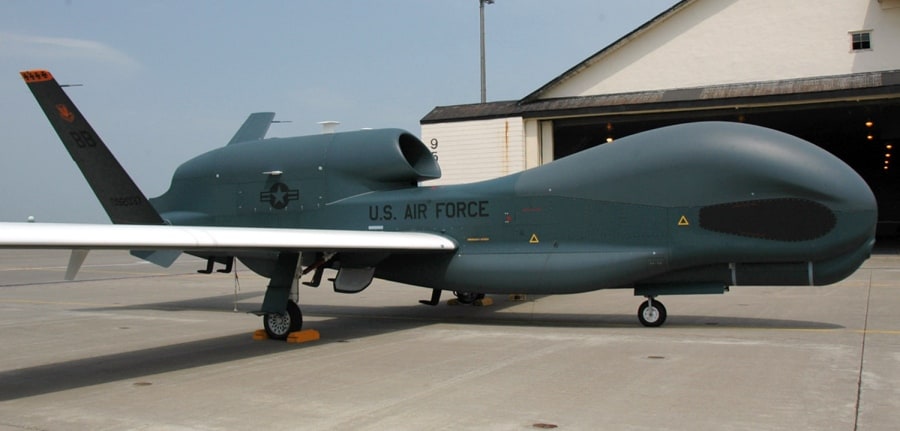
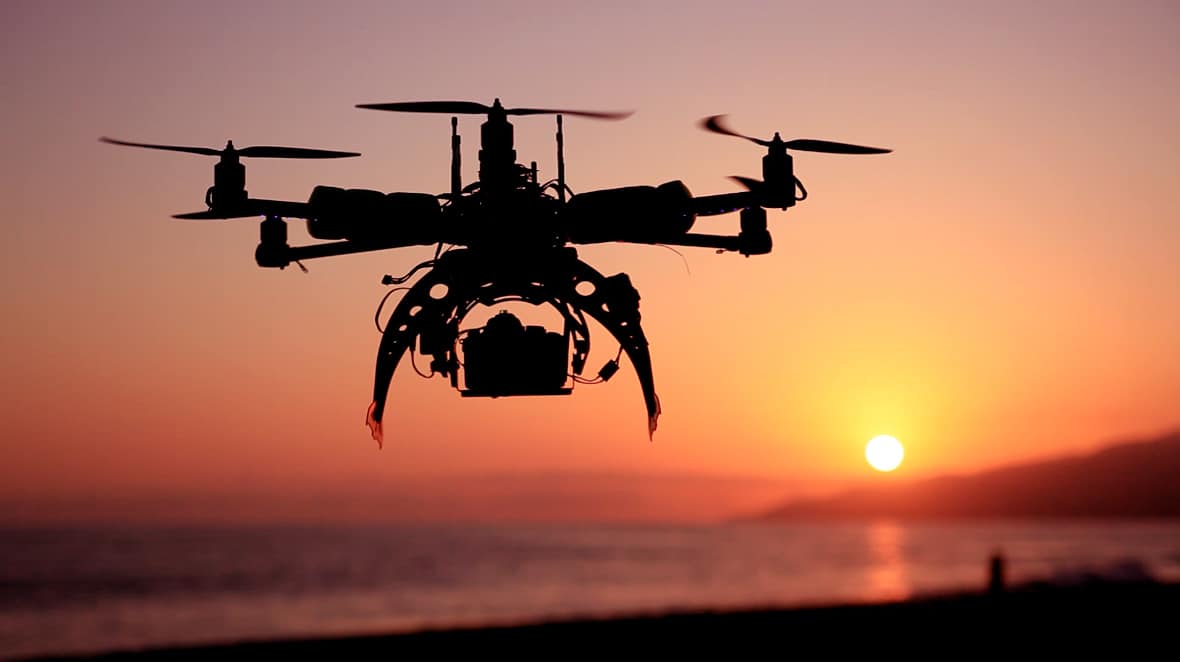
 This experiment is part of the Collaboration Leading Operational Unmanned Development for Meteorology and Atmospheric Physics” (CLOUD MAP) project. With combined efforts from 4 universities, their respective scientists are trying to paint the dots between drones and weather studies. In other words, they’re trying to come up with new ways drones could be used for studying various weather phenomenon.
This experiment is part of the Collaboration Leading Operational Unmanned Development for Meteorology and Atmospheric Physics” (CLOUD MAP) project. With combined efforts from 4 universities, their respective scientists are trying to paint the dots between drones and weather studies. In other words, they’re trying to come up with new ways drones could be used for studying various weather phenomenon. As far as the results are concerned, there are many things this drone mission could unveil. However, the most important one is definitely their data collecting task which will help bring light to certain weather phenomena that occur with the day/night cycle. We are talking about horrific weather scenarios including tornados, typhoons and so on.
As far as the results are concerned, there are many things this drone mission could unveil. However, the most important one is definitely their data collecting task which will help bring light to certain weather phenomena that occur with the day/night cycle. We are talking about horrific weather scenarios including tornados, typhoons and so on.

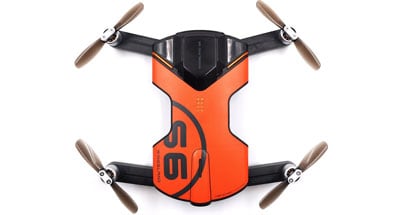
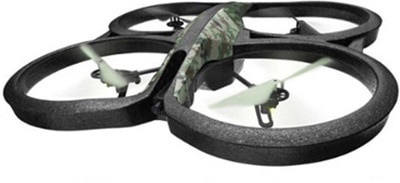


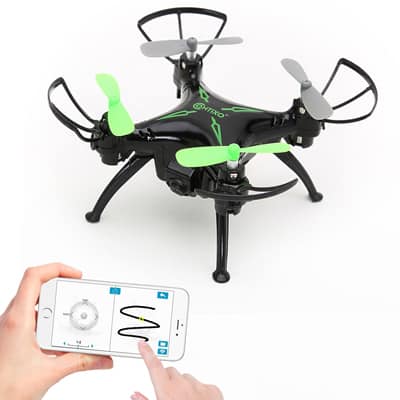








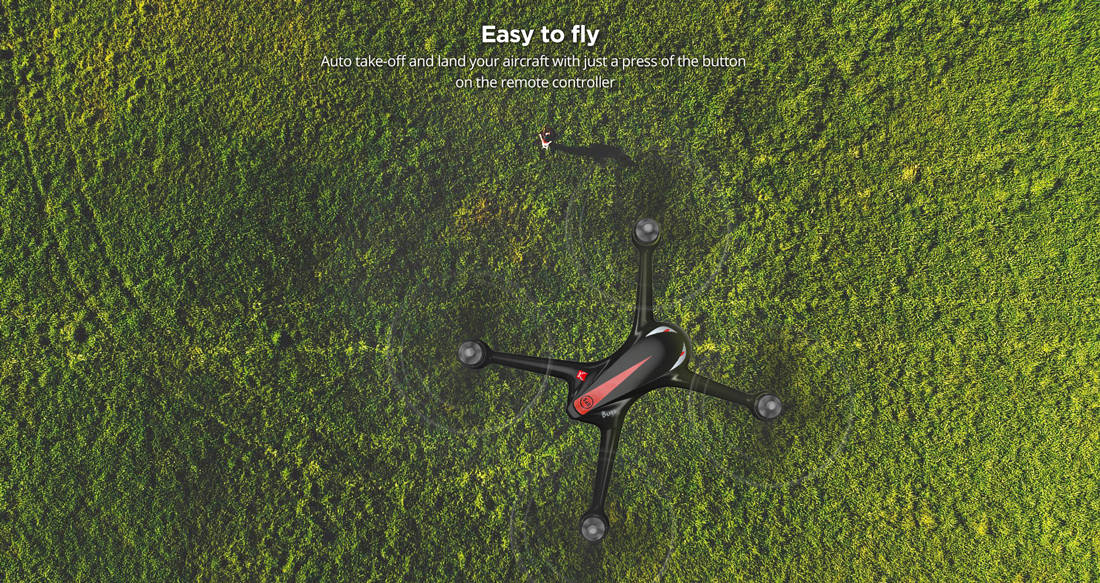
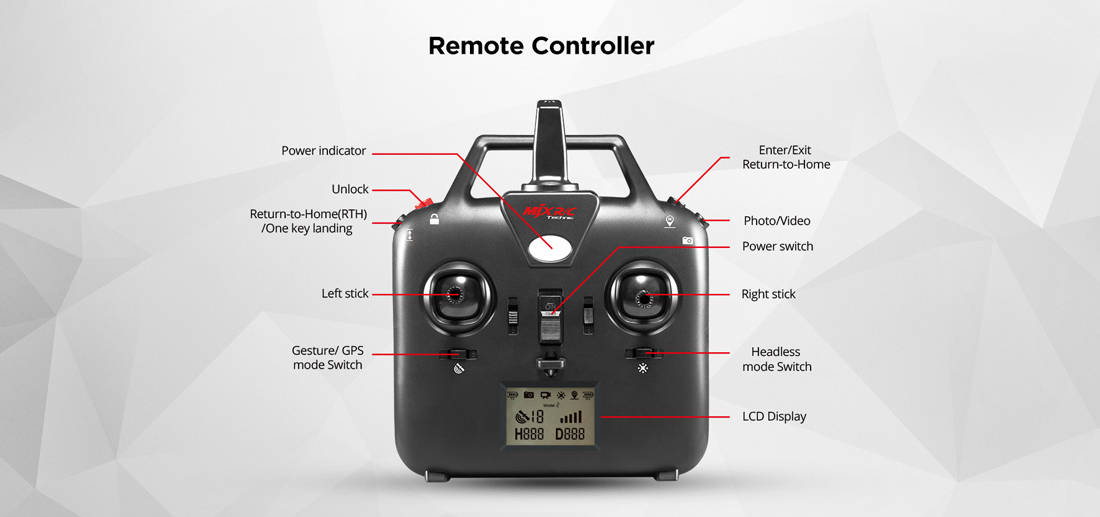
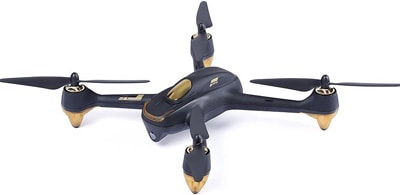 If we are to look at these 2 drones side by side, we would be sure we’re looking at 2 same drones. They’re identical in terms of size but also look like one another in terms of their bodies and camera positions. But, don’t let that fool you – they are 2 very different drones.
If we are to look at these 2 drones side by side, we would be sure we’re looking at 2 same drones. They’re identical in terms of size but also look like one another in terms of their bodies and camera positions. But, don’t let that fool you – they are 2 very different drones.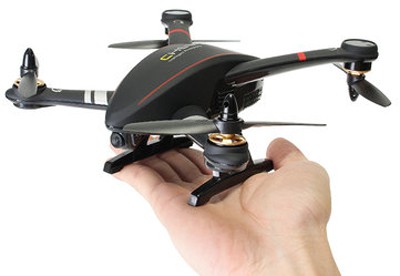 Now let’s take a look at another top contender – Cheerson CX 23. First things first – camera on B2W is much sharper and generally provides better images and videos. That’s partially due to higher resolution sensor which captures 1080p instead of 720p, which is max resolution for CX 23.
Now let’s take a look at another top contender – Cheerson CX 23. First things first – camera on B2W is much sharper and generally provides better images and videos. That’s partially due to higher resolution sensor which captures 1080p instead of 720p, which is max resolution for CX 23.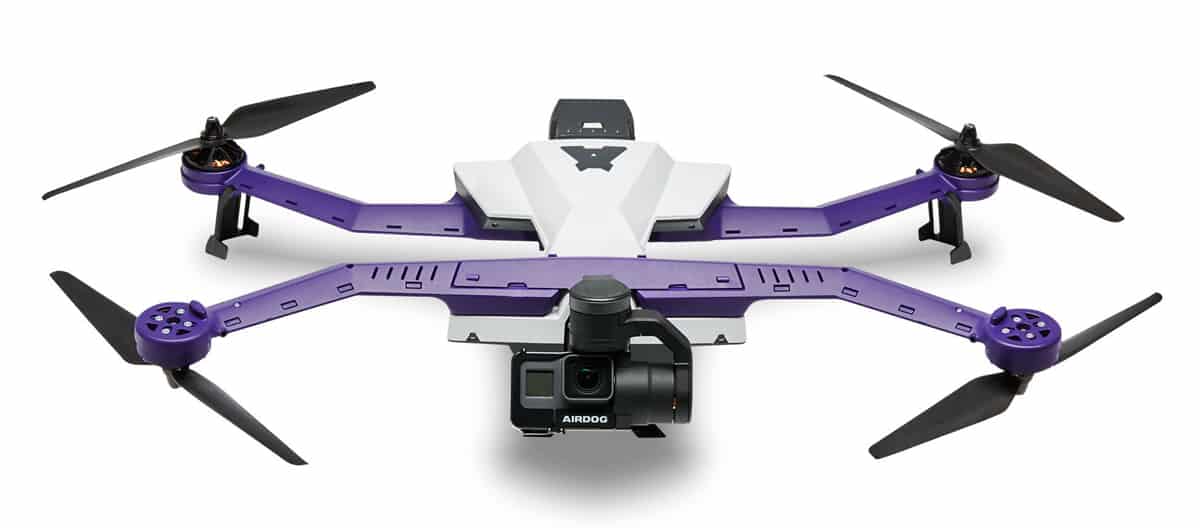
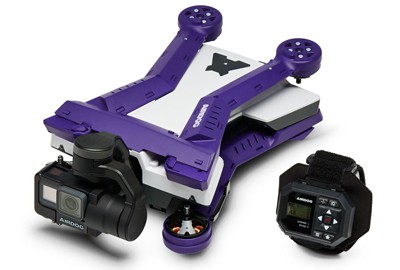 The first thing that needs to be said about the design of this beast is its foldable structure. All 4 “arms” are foldable and you’ll have an easy access for removing the props as well. This is, of course, extremely handy since it easily fits into backpacks. Second thing, while the shape and design are pretty much identical to the original, color schematic is not. AirDog ADII features white and purple fashion while its predecessor sports purple and yellow. Honestly speaking, ADII looks much better just because of this. The original is, at least in my opinion, too colorful to be taken seriously. As a matter of fact, most of my colleagues thought it was a toy drone until I told them the real story.
The first thing that needs to be said about the design of this beast is its foldable structure. All 4 “arms” are foldable and you’ll have an easy access for removing the props as well. This is, of course, extremely handy since it easily fits into backpacks. Second thing, while the shape and design are pretty much identical to the original, color schematic is not. AirDog ADII features white and purple fashion while its predecessor sports purple and yellow. Honestly speaking, ADII looks much better just because of this. The original is, at least in my opinion, too colorful to be taken seriously. As a matter of fact, most of my colleagues thought it was a toy drone until I told them the real story.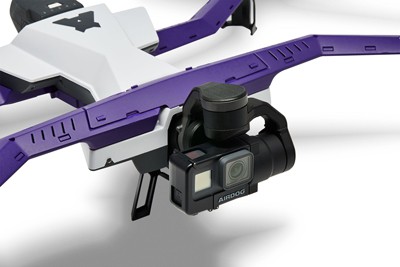 This time around, AirDog ARII incorporates a brand new gimbal with full support for the all new GoPro Hero 5. As far as I could tell, the clip-on mechanism is pretty much identical to that on GoPro Karma. Obviously, GoPro Hero 5 is an excellent camera and is bound to produce exceptional aerial footage of your favorite outdoor activities. Even more so if you take into consideration extraordinary tracking systems that are in place here.
This time around, AirDog ARII incorporates a brand new gimbal with full support for the all new GoPro Hero 5. As far as I could tell, the clip-on mechanism is pretty much identical to that on GoPro Karma. Obviously, GoPro Hero 5 is an excellent camera and is bound to produce exceptional aerial footage of your favorite outdoor activities. Even more so if you take into consideration extraordinary tracking systems that are in place here.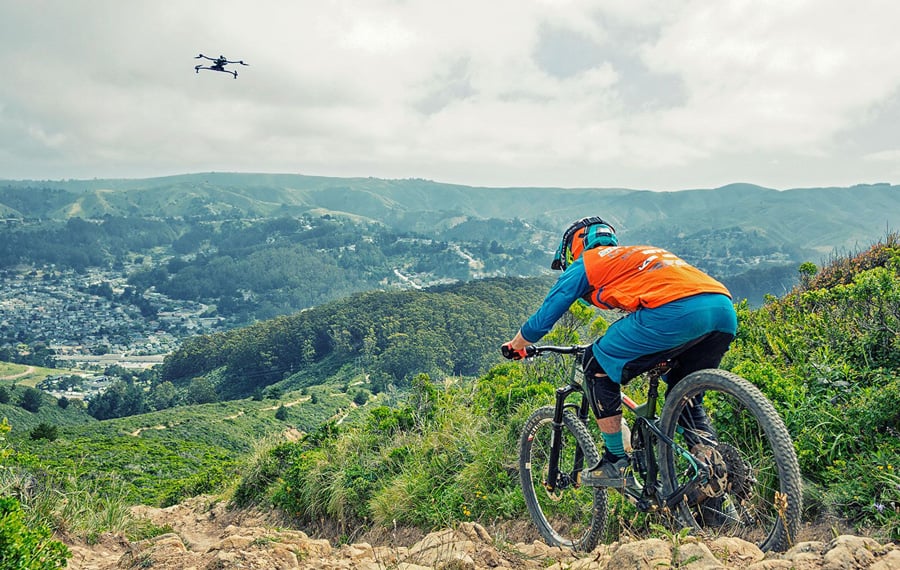
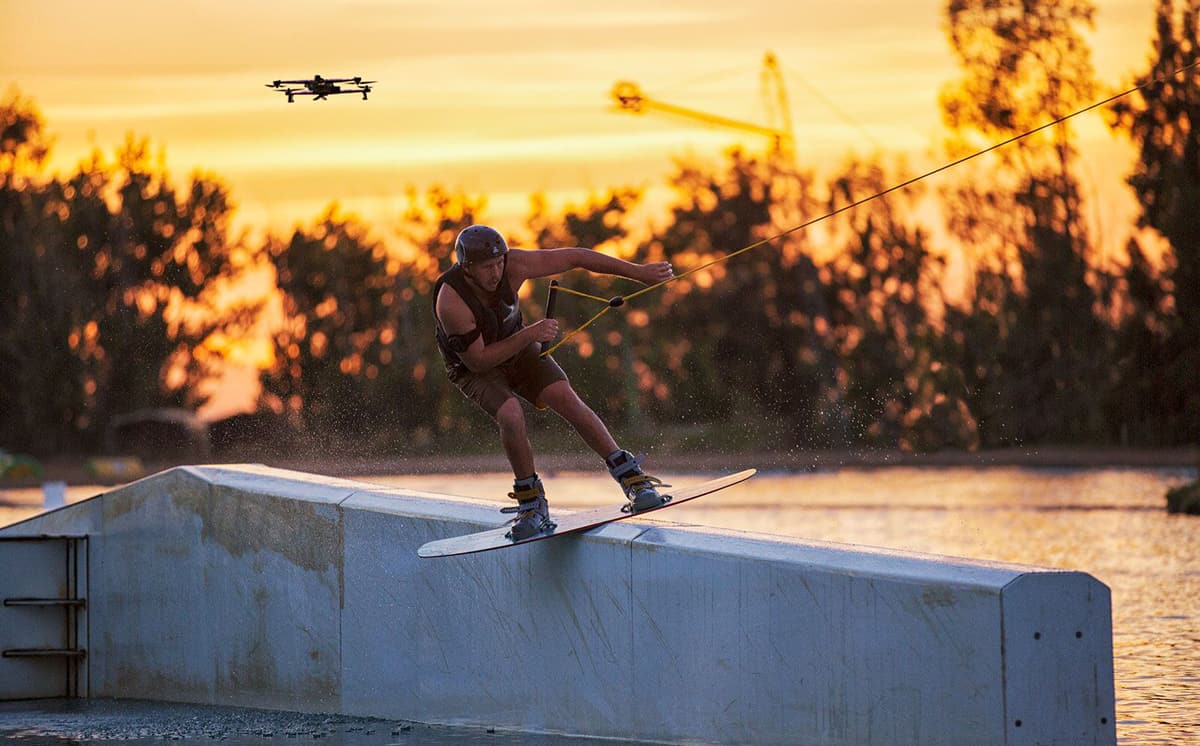
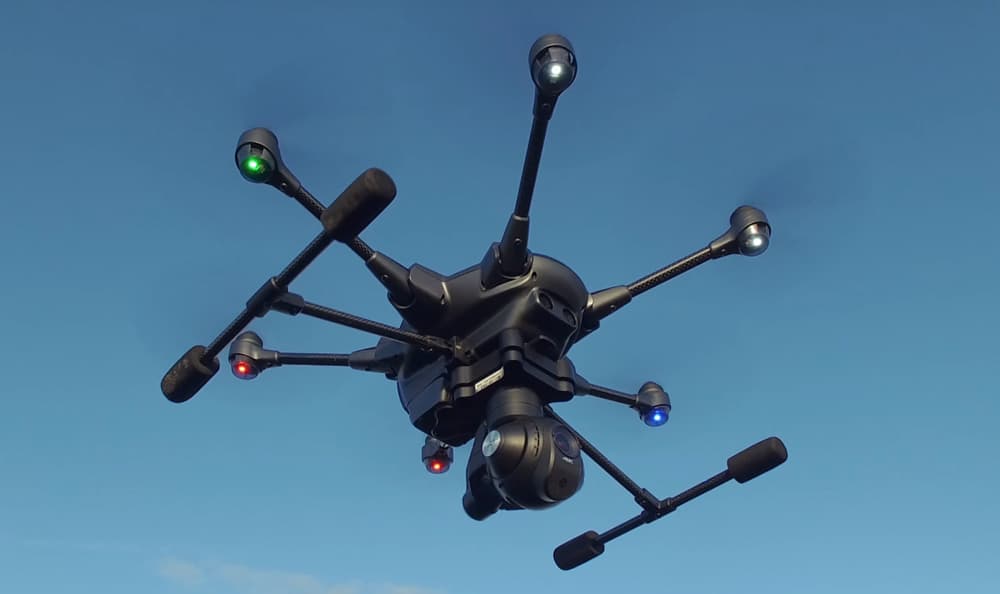


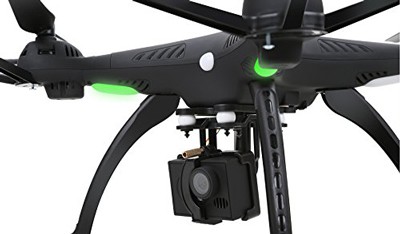 Camera is where this birdie shines the most. Even though we are talking about a mediocre 5MP sensor, due to other interesting aspects (more about that below) it is capable of providing you with exceptional aerial footage time and time again.
Camera is where this birdie shines the most. Even though we are talking about a mediocre 5MP sensor, due to other interesting aspects (more about that below) it is capable of providing you with exceptional aerial footage time and time again. Extra accessories are always an important factor when deciding which drone to go for. Luckily, when it comes to Holy Stone HS300, I am sure you will be more than satisfied. Why? Well, because you are getting a whole bunch of additional things that are bound to come in handy in times of need.
Extra accessories are always an important factor when deciding which drone to go for. Luckily, when it comes to Holy Stone HS300, I am sure you will be more than satisfied. Why? Well, because you are getting a whole bunch of additional things that are bound to come in handy in times of need.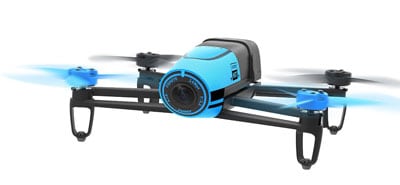 The standard model of original Bebop by Parrot costs roughly the same as Holy Stone HS300. Come to think of it, it’s actually a bit cheaper. But, is it as good as Holy Stone’s giant? Well, if you are looking for a drone suitable for amateur photography, I’ll have to point you to Holy Stone. It has a superior camera that’s mounted on a basic anti-vibration mount which does wonders in terms of general image quality.
The standard model of original Bebop by Parrot costs roughly the same as Holy Stone HS300. Come to think of it, it’s actually a bit cheaper. But, is it as good as Holy Stone’s giant? Well, if you are looking for a drone suitable for amateur photography, I’ll have to point you to Holy Stone. It has a superior camera that’s mounted on a basic anti-vibration mount which does wonders in terms of general image quality.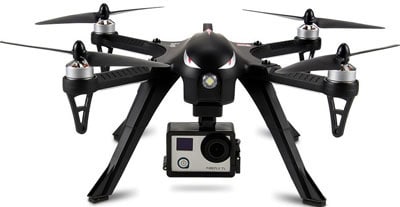 When we compare the weights of these 2 drones (HS300 with its default cam and MJX Bugs 3 with a typical action cam such as GoPro Hero 4), we’ll come to the conclusion they’re roughly the same. Size-wise, however, is slightly pulled towards the HS300 which is just a bit bigger.
When we compare the weights of these 2 drones (HS300 with its default cam and MJX Bugs 3 with a typical action cam such as GoPro Hero 4), we’ll come to the conclusion they’re roughly the same. Size-wise, however, is slightly pulled towards the HS300 which is just a bit bigger.



